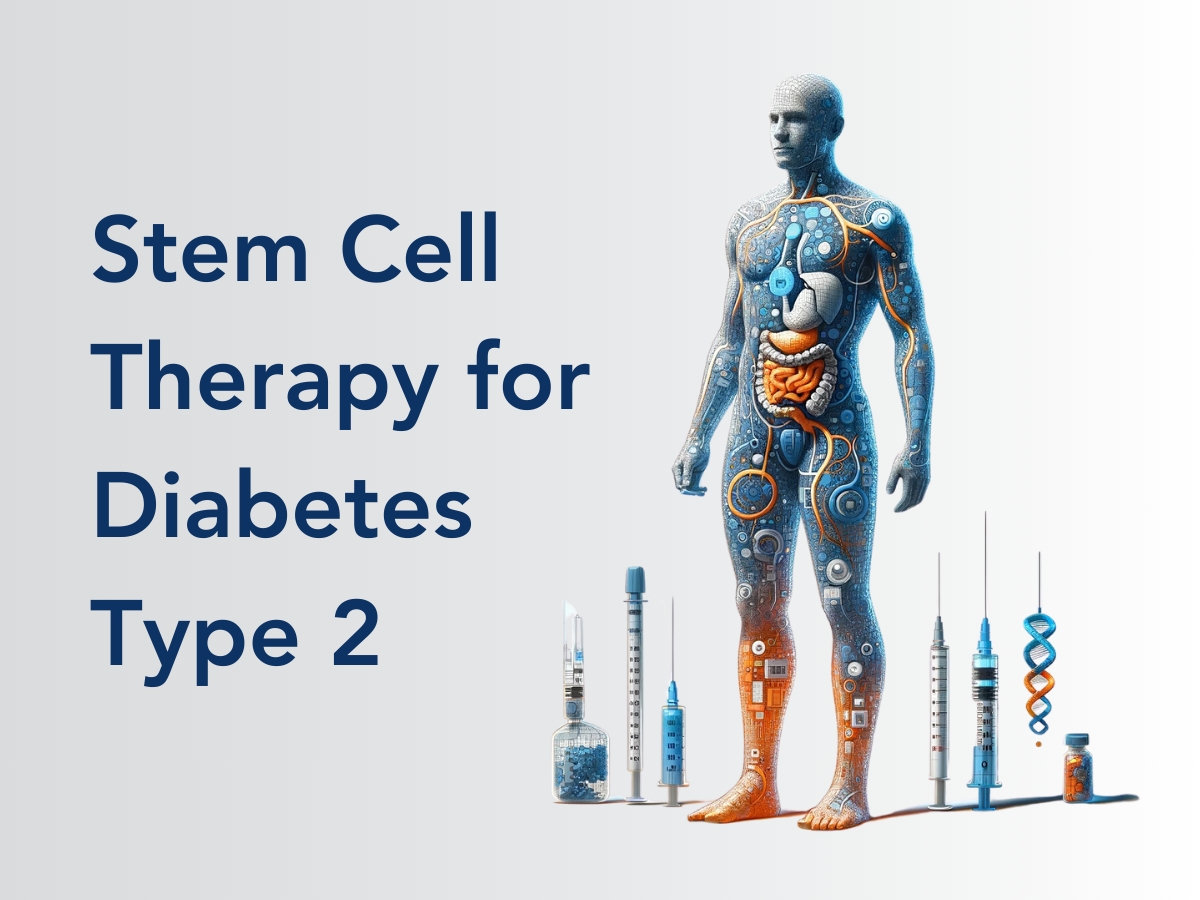Stem Cell Therapy For Type 2 Diabetes: Complete Guide
July 19 2024


Introduction to Stem Cell Therapy
In the rapidly evolving landscape of medical science, stem cell therapy emerges as a beacon of hope, particularly for managing chronic conditions like Type 2 diabetes. This form of regenerative medicine not only offers a potential halt in disease progression but also paves the way for revolutionary approaches to healing. In this comprehensive guide, we will delve into the intricacies of Type 2 diabetes, explore the transformative potential of stem cell therapy, and offer practical advice on selecting the best treatment centre.
We'll also break down the costs associated with this cutting-edge therapy, providing you with all the information needed to make an informed decision.
Gain a Clear Understanding of Type 2 Diabetes.
Type 2 diabetes is a chronic condition characterized by the body's inability to effectively regulate and utilize glucose, or sugar, as fuel. This leads to elevated sugar levels in the bloodstream, which can cause long-term damage to the circulatory, nervous, and immune systems. The condition stems from two primary issues: insufficient insulin production by the pancreas and a decreased cellular response to insulin, resulting in less sugar being absorbed by the cells. Although it was once referred to as adult-onset diabetes, type 2 diabetes is increasingly being diagnosed in both children and adults, largely due to a rise in obesity rates among children.
What is Stem Cell Therapy?
Stem cell therapy marks a revolutionary development in regenerative medicine, providing fresh hope and healing opportunities for individuals suffering from various medical conditions. This cutting-edge method leverages the body's natural healing capabilities, offering potential remedies for ailments previously deemed incurable. As this technology advances, stem cell therapy aims not just to relieve symptoms but also to tackle the underlying causes of diseases, leading to transformative health outcomes and enhanced quality of life.
How Stem Cell Therapy Works for Type 2 Diabetes
Stem cell therapy harnesses the body's healing powers using the patient's own cells, particularly stem cells from adipose tissue or bone marrow. This minimally invasive, ethical approach offers personalized regenerative medicine by tapping into the body's natural abilities for repair, immunomodulation, and tissue regeneration.
Benefits of Stem Cell Therapy for Type 2 Diabetes
- A slowdown in the progression of Type 2 Diabetes,
- A proactive approach to prevent/delay organ damage due to high blood sugar levels
- A boost in insulin production coupled with a decrease in insulin resistance
- Reduction in HbA1c levels
- Reduction in overall blood sugar levels
- Reduction in body swelling & enhanced mobility.
- Quicker wound healing, minimizing the risk of infections and complications.
- Enhanced functionality of organs impacted
How to Choose the Best Stem Cell Therapy Center for Type 2 Diabetes
Choosing the right stem cell therapy centre for type 2 diabetes involves a few critical considerations to ensure effective and safe treatment:
- Credentials: Verify that the centre has the necessary accreditations and certifications from recognized health authorities.
- Expertise: Look for a centre with experienced specialists in stem cell therapy, particularly those with a focus on diabetes treatment.
- Transparency: The centre should clearly explain their treatment protocols and what results you might expect.
- Patient Experiences: Research testimonials and, if possible, talk to former patients to gauge their experiences and the treatment’s effectiveness.
- Ethics: Ensure that the centre adheres to the highest ethical standards in sourcing and using stem cells, complying with all applicable laws.
- Personalised Care: Opt for a centre that tailors treatments to individual health needs and provides thorough follow-up care.
- Innovation: Consider centres that engage in ongoing research and adopt the latest advancements in stem cell technology.
Evaluating these factors will help you find a reputable and competent centre for your stem cell therapy, enhancing your chances for a successful treatment outcome.
The average cost of stem cell therapy for Type 2 Diabetes
The cost of ACT therapy can vary significantly depending on several factors:
- The type of cell fractions utilized
- The source of the cell fractions
- The amount of cells administered
- The quality of the cells
- The location of the treatment facility
Typically, prices for this therapy range from about Rs. 3,00,000 to Rs. 40,00,000 at different centres worldwide. It's important to recognize that, as a general rule, the expenses associated with cell fraction therapy are not covered by health insurance policies.
Stem cell therapy represents a significant stride forward in the treatment of Type 2 Diabetes
It marks a shift from symptom management to addressing the root causes of health conditions. With its potential to restore function and enhance quality of life, this innovative treatment option holds promise for millions suffering from this chronic disease. However, choosing the right therapy centre and understanding the financial investment are crucial steps. By considering factors such as the centre’s credentials, expertise, and commitment to innovation, patients can optimize their treatment outcomes. As the field of regenerative medicine continues to advance, it offers not just hope but a tangible path to better health for those with Type 2 diabetes.
FAQ
Q1. Can stem cells repair nerve damage from diabetes?
Ans. Stem cells show potential in repairing nerve damage caused by diabetes, particularly diabetic neuropathy. They may help regenerate damaged nerve tissues and improve function, offering hope for relief from pain and other symptoms associated with nerve damage. However, ongoing research is necessary to fully establish effective protocols.
Q2. What is the age limit for stem cell therapy?
Ans. You mentioned the age limit is 75 years. This limit is typically set to optimize safety and efficacy, as older individuals may have diminished regenerative capabilities and higher risk factors for any invasive procedure. However, eligibility can vary based on the individual's overall health and specific circumstances.
Q3. Is stem cell therapy safe?
Ans. Yes, stem cell therapy utilizing human stem cells (autologous mesenchymal stem cells) is considered safe when conducted properly. Clinics offering this treatment must adhere to correct cell administration protocols. Additionally, it's essential to screen patients thoroughly to determine if they are suitable candidates for stem cell therapy, as it may not be appropriate for everyone.
Q4. How long does stem cell therapy last?
Ans. Each session lasts approximately three hours. Most individuals are able to resume their normal activities within a few hours to a couple of days, following post-procedure care instructions and guidance provided.